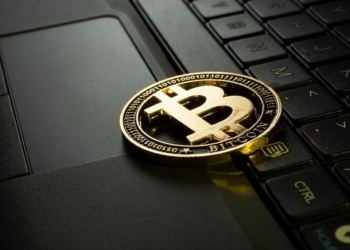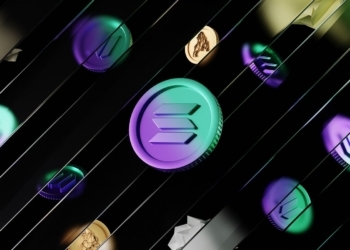Concerns over Bitcoin’s capacity to efficiently scale have been raised ever since the cryptocurrency was first introduced. A digital record known as a blockchain is used to process transactions involving the digital currency Bitcoin.
These transactions are also validated and preserved within the blockchain. Blockchain is a game-changing new technology for digital ledger recording.
Because the truth of what has occurred is validated not by a single actor but by the consensus of all participants, this makes it significantly more difficult to manipulate ledgers.
In addition to this, the network is decentralised, meaning that it can be found on computers located all over the world.
Bitcoin vs Bitcash
The Bitcoin network experienced a hard fork, also known as a split, on the first of August in 2017. Because of the fork, there is now a story involving two competing cryptocurrencies: Bitcoin (BTC) and Bitcoin Cash (BCH), which is a split from the original Bitcoin.
Both of these cryptocurrencies are named Bitcoin.
Although Bitcoin Cash wasn’t the first cryptocurrency to split off from Bitcoin in this way, it was one of the most notable due to the speed with which it rose to become one of the leading cryptocurrencies in terms of market capitalization.
Market capitalization is done by multiplying the number of coins in circulation by the price of each coin. The fact that the two cryptocurrencies’ names are so similar, on the other hand, can make it challenging to differentiate between Bitcoin and Bitcoin Cash at first glance.

Transaction Fee
One of the primary critiques of Bitcoin is that it has high transaction fees, despite the fact that it is struggling to fulfil the increasing demand. At the present moment, Bitcoin Cash has lower average transaction fees than Bitcoin (0.0019 for Bitcoin Cash versus 0.39 for Bitcoin).
BCH is not utilised nearly as much as BTC is, and there is not a huge network load, so this comparison is not necessarily fair (yet). However, the BCH camp may use this point to criticise BTC. However, this comparison is not necessarily fair (yet).
Blocksize
Before Bitcoin became popular, there weren’t many transactions to handle. With hundreds of thousands of daily transactions, speeds and costs can be slower. The network can’t handle high traffic and low costs. Scalability refers to making blockchain technology suitable for mass use.
Changing Bitcoin’s block size could help it scale. A blockchain network’s fresh block contains new transactions. Miners use their computational power to solve difficult mathematical equations when “mining” BTC and BCH.
Miners compete to solve equations and add blocks to the network. In exchange for validating new transactions and securing the network, they receive BTC or BCH.
BTC’s 1-megabyte block size limits the number of transactions in each block. High transaction volume might create a long “queue” of users waiting to get their transaction into a fresh block.
As a user, you can either wait for your transaction to go through or pay a hefty price so miners prioritise it. Some Bitcoin community members grew fed up with years of scalability discussions.
The BCH team extended the block size from 1 to 8 megabytes on August 1, 2017. This separated Bitcoin’s blockchain and created Bitcoin Cash. This update allows more transactions per block, but at a cost.
Larger blocks imply fewer people may become “nodes,” or servers that store and service the blockchain. Larger blocks use more hard drive space, costing node operators more money.
This can lead to the increasing centralization of nodes, which can undermine Bitcoin’s security if a few powerful people choose to compromise it.
The BTC camp (“small blockers”) wants to keep blocks short and scale through “layer 2” or off-blockchain solutions like Lightning Network.
BTC wants small blocks. BCH wants large blocks. BCH seeks to scale on-chain by raising block size, while BTC wants to scale off-chain utilising layer 2 technology.
Transaction Speed
BCH blocks can fit more transactions, hence transactions are more likely to fit without waiting. BCH isn’t used as much as BTC, hence its network traffic hasn’t been tested as much. BCH’s block height is higher than BTC’s, indicating it mines and confirms transactions faster.
Price
Bitcoin and Bitcoin Cash differ in price. No one uses a crypto asset without value. Today, many individuals predict BCH prices. Bitcoin’s pricing is unbeatable. Traditional financial markets collapsed before the 2010s global recession.
From March 2009 to December 2019, the S&P 500 and Dow Jones Industrial Average have gained 369 and 326 per cent, respectively. These gains aren’t funny. Bitcoin helped make crypto the best-performing asset class of the 2010s.
Bitcoin’s price rose 12 million per cent from March 2010, when 1 BTC was $0.05, to December 2019. No typo! Such investment rewards are rare. Unfortunately, BCH has lost around 65% of its value since August 2017.
Hashrate
BTC is the clear winner when it comes to hash rate, also known as “mining power,” when comparing the Bitcoin network to the Bitcoin Cash network.
The total hash rate of Bitcoin Cash is a fraction of what it is for Bitcoin. This hash rate shows the amount of computer power that miners are utilising to validate transactions and safeguard the network.
At the time of writing, the overall hash rate of BTC is approximately 100 exahashes, whereas the hash rate of BCH is approximately 2 exahashes, which represents a difference of 50 times.
This makes Bitcoin Cash more susceptible to what is known as a “51% attack,” which occurs when a malicious actor or group gains 51% of the network’s hash rate or more.
This gives the attackers the ability to engage in activities such as reversing transactions or other activities that are detrimental to the network.
Token Issuance
To issue tokens on the Bitcoin blockchain, projects must use Omni, a platform for producing and trading digital assets and currencies. Omni transactions include “next-generation functionality” but are largely used with stablecoins.
Bitcoin Cash’s Simple Ledger Protocol (SLP). The protocol lets developers produce tokens on BCH, similar to Ethereum. Some assets are both Omni and SLP tokens. Existing on many blockchains helps people choose a network. Both solutions have been adopted slowly.
The SLP protocol allows nonfungible tokens (NFTs). Compared to Ethereum or other blockchains, their utilisation on BCH is limited.
Also Read: BEST NFTS TO INVEST IN 2022
Conclusion
Block size, transaction fees, and speed favour BCH over BTC. BTC is widely used. A high hash rate makes Bitcoin more secure. Bitcoin is the decade’s best-performing asset (across all asset classes, not just crypto). Most comparisons between the two cryptocurrencies focus on network age.
BCH may face the same scalability issues as BTC and hefty transaction fees if it gets more popular. BCH may have similar or better adoption than BTC. If BCH’s price climbs with its popularity, miners may switch to it.
So far, there’s no clear winner. Bitcoin might be “digital gold” or a store of value in the near future, whereas Bitcoin Cash could be a convenient payment option.













Discussion about this post